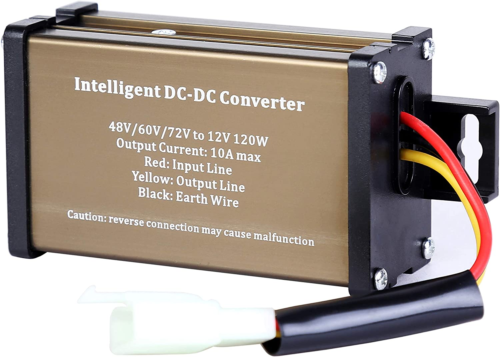A bit of care with terminology. "Transformer" is already used to mean an arrangement of coils which transfers AC current from one coil to another. It may change the voltage and amperage in the process, although there are 1:1 transformers. And it's only AC in and out.
A device that changes DC power to AC is an "Inverter". A device that changes DC input to another DC voltage is a "Converter" of some description.
The actual power input to your laptop is almost certainly not AC power - almost no one does this anymore as it will be heavy and hot (because there must be a Transformer in the laptop to do it). The input to the power brick/supply for the laptop is likely to be AC power, but the brick puts out DC power - that is what it is for. Check on the brick to see what the label says it outputs to the laptop.
The brick is a transformer (to lower the voltage) and then a rectifier to change the AC to DC for the laptop to consume, and probably some guard circuitry as well.
For this reason, a DC-DC step down or up converter will very likely power your laptop and charge it's battery - DC is what the actual laptop is expecting. Match the connector and leave the power brick at home. I have seen laptops and tablets that require voltages from 5V USB up to 20+ volts for operating and charging.
Your last message hints that you want to power other devices as well - yes, some require AC current and perhaps at high amperage. You may find equivalent devices designed to work off DC power - especially in 'camping' or 'RV' catalogs - there is a market for these. DC powered TVs, washing machines, air conditioners, kettles, fans, etc.
You can also run many battery powered tools with DC if you match the required voltage with a DC-DC converter.
And if you search on the phrase '48v inverter 120v' (or '48v inverter 240v' where I live) you will find many Inverters that can produce AC current from a higher DC voltage. Substitute the voltage your battery supplies for the search. Look for one that matches your likely use.






